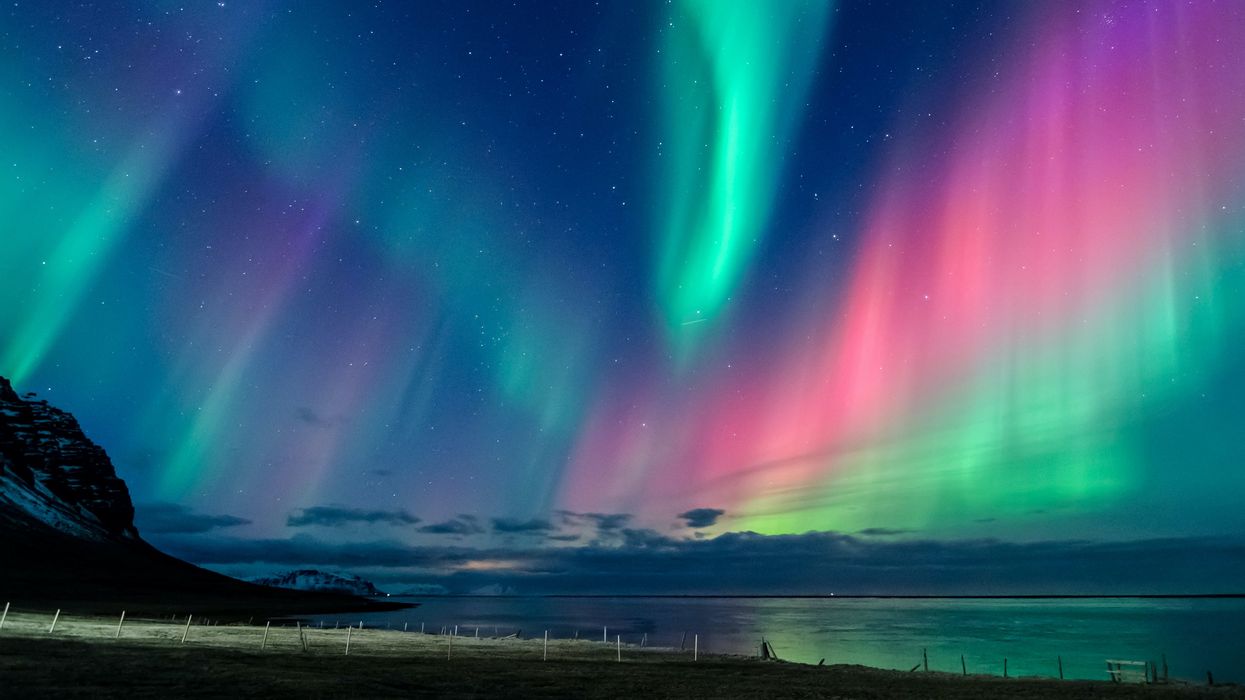The northern lights could shine across Canada tonight after a huge geomagnetic storm
Certain regions will have a better chance of seeing auroras.

The northern lights shine in the sky.
Have you always wanted to see the northern lights dancing in the skies over Canada? You might get your chance.
The northern lights could be visible over the country tonight after a powerful solar flare erupted from the sun, releasing a barrage of super-hot plasma toward Earth.
Known as a coronal mass ejection, this resulted in a severe geomagnetic storm, the strongest solar storm since 2017, according to Space.com.
The storm means that Canadians across the country could have a chance of seeing bright auroras tonight, with further geomagnetic activity possible.
On Saturday, the U.S. National Oceanic and Atmospheric Administration's Space Weather Prediction Center issued a geomagnetic storm watch for March 24-25.
The watch was issued due to a coronal mass ejection from the sun associated with an X-class flare (indicating the largest kind of solar flare) observed on March 23.
The resulting geomagnetic storm was powerful enough to register as a "severe" G4-level storm on the G-scale, which scientists use to measure the intensity of a geomagnetic storm. The scale ranges from G1 (minor) to G5 (extreme).
The stronger a geomagnetic storm is, the farther it tends to push the "arc" of the aurora borealis, which normally lies over the north pole.
While the geomagnetic storm watch was changed to a G2 (moderate) geomagnetic storm warning, bright auroras could still be visible over Canada tonight.
The NOAA's Aurora Dashboard provides a prediction of the aurora's visibility over the coming nights. The colours represent the chance of seeing the aurora, with red indicating the highest probability, followed by green, with clear areas of the map having the lowest chance.
The map's viewline represents the southernmost locations from which you may see the aurora on the northern horizon.

According to the dashboard, northern parts of B.C., the prairies and Ontario will have the best chances of seeing the northern lights, with a high likelihood of aurora over these regions.
Southern parts of B.C., Alberta, Saskatchewan and Manitoba, as well as parts of northwestern Ontario like Thunder Bay, still have a chance of seeing the northern lights tonight, although the likelihood of auroras in these areas is predicted to be on the lower (green) side.
The aurora viewline extends all the way into the U.S., covering parts of southern Ontario, Quebec, New Brunswick and Newfoundland, but the likelihood of auroras here is low.
If you don't get the chance to see the northern lights this time around, you'll still want to keep your eyes peeled — the NOAA says that while the effects of the coronal mass ejection "appear to be weakening," solar wind speed is "still elevated and could result in further geomagnetic storming."
The SWPC currently predicts that G1 (minor) geomagnetic storming is likely on March 26 due to persistent CME effects, so be sure to check back for updates.
As for when to look for the northern lights, the NOAA says the best aurora viewing is usually within an hour or two of midnight (between 10 p.m. and 2 a.m. local time).
However, other conditions will affect whether the northern lights are visible or not, including cloudy skies. The best viewing can be found under clear skies in dark areas away from city light pollution.
Good luck!
This article's cover image was used for illustrative purposes only.
